A
- Autogating
-
Brainboxes’ RS422/485 products all have autogating as standard. When the COM port is set to half duplex mode, transmitted and received data is sent across the same signal lines. Autogating means the Brainboxes card knows when to ‘listen’ for data and when to transmit data, with a quick and automatic hardware switch between the 2 modes. This is much faster than software switching and ensures no data loss.
B
- BB16CF950+
-
Brainboxes inhouse designed UART for PCMCIA / CompactFlash cards or other devices that require a UART interface. BB16CF950+ Specification
- BB16PCI958
-
Brainboxes inhouse designed UART, it contains eight UARTs (Universal Asynchronous Receiver-Transmitters) with a host interface suitable for direct connection to a PCI bus. BB16PCI958 specification
- Bluetooth
-
Bluetooth wireless technology makes the sharing and exchange of information between mobile or static devices as simple as possible. Whether at home, on the move, or in the office it can be used for networking, sharing files, synchronizing information, email, Internet access, printing, and more. In industry it can be used to wirelessly control equipment and machinery – perfect for servicing inaccessible devices.


 Connect wirelessly to a printer with Bluetooth wireless technology to easily print copies of your documentsStay linked to your LAN via a Bluetooth wireless technology enablednetwork access point to access emails, Internet and shared dataEmail anywhere via Bluetooth wireless technology by connecting your laptop or Pocket PC to your mobile phone
Connect wirelessly to a printer with Bluetooth wireless technology to easily print copies of your documentsStay linked to your LAN via a Bluetooth wireless technology enablednetwork access point to access emails, Internet and shared dataEmail anywhere via Bluetooth wireless technology by connecting your laptop or Pocket PC to your mobile phone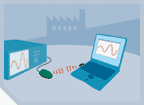

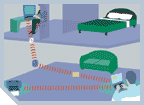 Use Bluetooth wireless serial adapters in test or manufacturing to control and monitor equipment
Use Bluetooth wireless serial adapters in test or manufacturing to control and monitor equipmentCreate instant ad-hoc networks to share files and information Connect to the Internet easily from home with
a Bluetooth wireless technology enabled broadband modemSoftware
Your experience of Bluetooth wireless technology will depend very much on the software you use. Brainboxes has been writing robust, intuitive, highly configurable software since 1984 – something very few companies can claim.
Our software is easy to use and puts you in full control of interactions with other devices equipped with Bluetooth wireless technology. Encryption and password protection guarantee the security of the data transmitted.
- Bluetooth Device Class
-
There are 3 classes of Bluetooth device defined to suit different needs:
- Class 1 – Long RangeMaximum Output Power of 100mW (20dBm)
- Class 2 – Medium RangeMaximum Output Power of 2.5mW (4dBm) most common
- Class 3 – Short RangeMaximum Output Power of 1mW (0dBm) very rare
A value of distance cannot be explicitly stated for each device class; every user environment is slightly different, and affects the signal in different ways. The best way to compare devices operating range is by comparing Output Power. A device with a larger output power will be able to communicate with other devices over a further distance. Most Brainboxes devices are class 1 devices with a very powerful Power Output, Brainboxes Bluetooth Class 1 devices have one of the most powerful Bluetooth radios in the industry – 14dBm
- Bluetooth Profiles
-
Profiles are invisible connectors. Simply match 2 profiles on the devices you want to connect and begin sharing information.
SDAP- Service Discovery Application Profile Allow Bluetooth devices to discover compatible services
SPP – Serial Port Profile Behaves like a serial cable, using virtual COM ports for transmitting and receiving data.
DUN – Dial up Networking Connect to the internet through a phone
FTP – File Transfer Profile Send or receive files, for example documents or pictures
OPP – Object Push Profile Send/Receive business cards / calendar items and other mobile phone entries
FAX – Fax profile Send faxes through a phone
LAN – Local area network access profile Get onto network through access point, in the office or the home
HID – Human Interface DeviceAllows Bluetooth devices such as a keyboard and mouse to be interfaced.
- Bluetooth Specification
-
There are 4 different Bluetooth Specifications; each specification include different profile support. All Brainboxes Bluetooth devices are Qualified to Bluetooth Specification 1.1 or 1.2. Brainboxes Bluetooth products are officially qualified by the Bluetooth SIG and can be found listed on the official Bluetooth SIG website
C
- Capacitor
-
A capacitor is a passive electronic component consisting of a pair of conductors separated by an insulator. When there is a potential difference (voltage) across the conductors a static electric field develops in the dielectric that stores energy and produces a mechanical force between the conductors. An ideal capacitor is characterized by a single constant value, capacitance, measured in farads. This is the ratio of the electric charge on each conductor to the potential difference between them.
Capacitors are widely used in electronic circuits for blocking direct current while allowing alternating current to pass, in filter networks, for smoothing the output of power supplies, in the resonant circuits that tune radios to particular frequencies and for many other purposes.
As required by the PCI-SIG all Brainboxes cards have capacitors connected to all the power pins on the PCI connector, near to the connector. This ensures that the electrical power rails on the Brainboxes card stay at the right voltage, regardless of the power demands placed on them. Data signals keep their integrity.
D
- DIN Rail
-
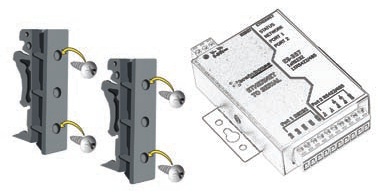
The DIN rails allow the devices such as the brainboxes ethernet to serial range or usb to serial range to be mounted in a Server rack or any DIN rail fitted equipment rack. The DIN rails conform to IEC International Standard 60715 and European Standard EN 50022.
E
- ExpressCard
-

The ExpressCard standard define two form factors, the 34mmm wide ExpressCard/34 and the 54mm wide ExpressCard/54.
As well as being the de-facto expansion standard on the latest laptop ExpressCards slots have been fitted to some desktop PC. Brainboxes ExpressCard technology has several advantages over the older PCMCIA card technology, the four main ones being:- ExpressCards that are about half the size & weight
- ExpressCards give longer battery life by using a lower supply voltage and having improved power management
- ExpressCards offer a better user experience being based upon USB’s leading edge plug and play mechanism.
- ExpressCards are lower cost due to their smaller size and higher integration parts.
F
- FIFO
-
Stands for First In First Out and refers to an area of memory used to store incoming and outgoing data. Brainboxes cards have a large FIFO which means there is more memory on the Brainboxes card for buffering data, so calls to the computer processor are less frequent. This significantly increases data throughput and improves CPU utilization by other applications.
- Fly Lead
-
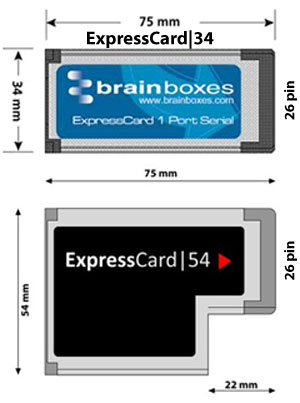 The UC-420 has 1 serial port on a fly lead
The UC-420 has 1 serial port on a fly leadAn extra cable (often connected to a bracket) which contains a serial port. The fly lead provides additional serial ports when there is not enough space on the first bracket.
I
- IP-30 Rated
-

IP-30 rated means a device conforms to a internationally recognized standard of rugged, high strength, metal enclosure which protects the device in any environment from industrial to office based.
IP (International Protection Rating) Code specifies that objects greater than 2.5mm in diameter cannot penetrate the case, this means that the hardened metal case provides a safety barrier from objects (such as tools and wires) interfering with the internal circuitry.
K
- Kaizen
-
Brainboxes constantly strives to achieve higher standards for the benefit of customers. ‘Kaizen’ is a Japanese term meaning ‘continuous improvement’. Kaizen has been implemented throughout Brainboxes, resulting in significant improvements to our products and our customer service, as illustrated by the development of our own custom ASIC “LYNX” chip and our new lifetime warranty. As part of this ongoing process, in 2004 we embarked on ‘Lean’ and ‘6 Sigma’ programs which are successfully increasing productivity and efficiency in all areas of the company.
L
- Latency
-
Latency is a measure of time delay experienced in a system. For full explanation of latency see our latency presentation.
- Loop Back Connector
-
A loop back connector can be used to echo RS232 data transmitted by a serial port back into its own RS232 receiver. In this way, the function of the serial port can be tested.
- Low Profile
-
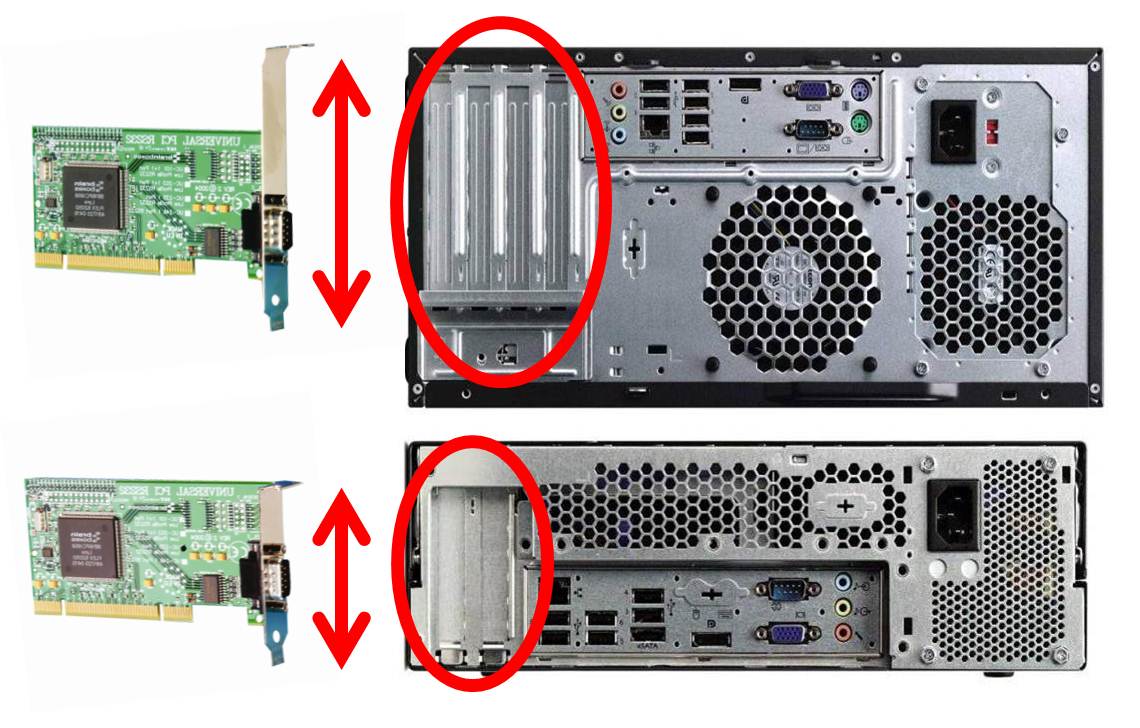
Low-Profile PCI is a new PCI (and PCI-Express) card standard for space-constrained system designs. The new form factors maintain the same electricals, PC signals and software drivers as standard PCI v3.0 expansion cards. They are also mechanically similar; however, Low-Profile PCI is an additional form factor that defines a shorter raw card and new mounting bracket for card retention.
M
- Megabaud
-
A measure of data transfer speed, in symbols (often simplified to bits) per second.
1 baud = 1 bit per second
1 Megabaud = 1,000,000 bits per second = 1,000 kilo bits per second = 1,000 kb/s
The simplification to bits is inaccurate but now an industry standard.
O
- Optical Isolation
-
Optical isolation provides greater protection from electrical current surges to both the card itself and the PC. It improves noise immunity by isolating the PC from the card’s transmit ground.
P
- PCI
-
PCI – Peripheral Component Interconnect – (part of the PCI Local Bus standard and often shortened to PCI) is a computer bus for attaching hardware devices in a computer. These devices can take either the form of an integrated circuit fitted onto the motherboard itself, called a planar device in the PCI specification, or an expansion card that fits into a slot. The name PCI is an initialism formed from Peripheral Component Interconnect. The PCI Local Bus is common in modern PCs, where it has displaced ISA and VESA Local Bus as the standard expansion bus, and it also appears in many other computer types. Despite the availability of faster interfaces such as PCI-X and PCI Express, conventional PCI remains a very common interface.
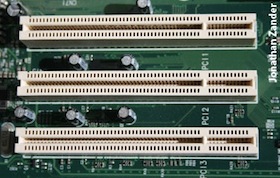
- PCIe
-
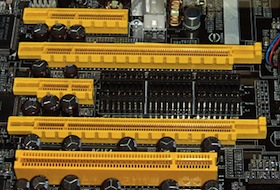
PCI Express (Peripheral Component Interconnect Express), officially abbreviated as PCIe (or PCI-E, as it is commonly called), is a computer expansion card standard designed to replace the older PCI, PCI-X, and AGP standards. PCIe 2.1 is the latest standard for expansion cards that is available on mainstream personal computers.
PCI Express is used in consumer, server, and industrial applications, as a motherboard-level interconnect (to link motherboard-mounted peripherals) and as an expansion card interface for add-in boards. A key difference between PCIe and earlier buses is a topology based on point-to-point serial links, rather than a shared parallel bus architecture.
Brainboxes PCIe cards fit in any length PCIe slot.
- PCMCIA
-
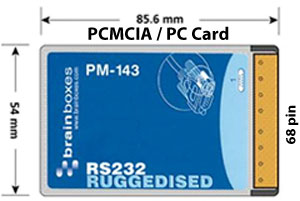
PCMCIA stands for Personal Computer Memory Card International Association, the group of companies that defined and developed the standard. While this acronym did clearly describe the original intentions of the organization’s standard, it was difficult to say and remember, and was sometimes jokingly referred to as “People Can’t Memorize Computer Industry Acronyms”. Later PCMCIA was rebranded to simply PC-Card. PC-Cards were superseded by ExpressCards in 2003, laptops manufactured after this time are more likely to have ExpressCards.
- POS
-
Point of Sale, a term used to denote any items/devices which are used by staff in a shop to sell goods to a customer. When these items/devices are electronic then the acronym is lengthen to EPOS. Brainboxes sell a range of EPOS cards for point of sale systems, for example allowing the til to connect to the peripheries such as bar code scanners.
R
- RS-422
-
The RS422 standard defines a serial communications standard. RS422 is a high speed and/or long distance data transmission. Each signal is carried by a pair of wires and is thus a differential data transmission system. Over distances up to 40 feet the maximum data rate is 10 Megabits per second, and for distances up to 4000 feet the maximum data rate is 100 Kilobytes per second. A 120-Ohm resistor should be used to terminate the receiving end of the line. It is generally used between one transmitter receiver pair to ONLY one other transmitter receiver pair, but each output can drive up to 10 receivers.
RS422 Standard
1 Driver up to 10 Receivers
Line Length
Max Data Rate 40 feet (12m) 10 Mbits/sec 400 feet (122m) 1 Mbits/sec 4,000 feet (1219m) 100 Kbits/sec Generally, in RS422 systems all 8 signal lines from the 9 pin D connector participate in the data transfer sequence, thus 4 twisted pair cables are used. One twisted pair carries the TXD data outwards, one pair brings the RXD data inward, another pair carries the RTS handshake outwards and the fourth pair brings the CTS handshake inwards. There is no need to carry the ground from one device to another.
This RS422 arrangement allows data to be transmitted and received simultaneously since each signal has its own data cable pair. In addition, the receiver can set RTS true so telling the transmitter on its CTS input that the receiver is ready to accept data. In this way, no data will ever be transmitted when the receiver is unable to accept it, due to a full input buffer etc. And so no data will be lost.
- RS-485
-
The RS485 standard is similar to the RS422 standard upon which it is based. The main difference is that up to 32 transmitter receiver pairs may be present on the line at one time. A 120-Ohm resistor should be used to terminate either end of the main line. If more than one device may transmit data, the RTS line is used as transmit enable signal, so preventing contention between talkers.
RS485 Standard
Up to 32 Driver/Receiver Pairs
Line Length Max Data Rate
40 feet (12m) 10 Mbits/sec 400 feet (122m) 1 Mbits/sec 4,000 feet (1,219m) 100 Kbits/sec The RS485 standard is intended for up to 32 driver receiver pairs on the bus. The line drivers used in the Serial Solutions RS422/485 card are designed to work correctly in both RS422 and RS485 systems. The main difference therefore is in how the system is implemented. Though the card uses a 9 pin D connector, in general, not all the lines are used for RS485 systems. The RTS+/- and CTS+/- lines, though driven by the card, are usually not connected. In two wire, Half-Duplex configurations the TXD+ line is connected to the RXD+ whilst the TXD- line is connected to the RXD-, only one pair of twisted wire cable is used in RS485 Half Duplex communications.
The hardware handshaking performed by the CTS+/- and RTS+/- lines in RS422 systems are handled by a software protocol in RS485 systems. In situations where more than one device may transmit data on the shared data line, each cards RTS line is used as a gating signal to enable the TXD driver only when that card needs to transmit data, i.e. set TXD GATE or AUTO jumper. This mechanism prevents bus contention caused by multiple transmitters holding the line in opposing states. Revision 3 and higher versions of this card have a facility which automatically “gates” the RTS line, thus enabling the transmitter independently of any software. This “Auto gating” is described in more detail in the previous 485 half duplex section
The three wiring schemes given described below are:
- RS485OneTalkerManyListeners(HALFDUPLEX)
- RS485 Many Talkers Many Listeners (HALF DUPLEX.)
- RS485 Many Talkers Many Listeners (FULL DUPLEX.)
- Ruggedised
-
A ruggedised electronic device is one which is designed to operate in difficult environments and conditions. Brainboxes ruggedised laptop cards integrate the serial cable (or sometime connector) to ensure a strong connection between laptop and serial connected device.
S
- Serial
-
Is a wired comunication…
- Spider Cable
-
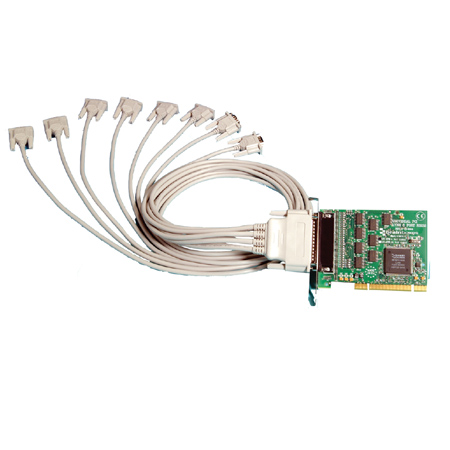
A spider cable often has one large connector which branches out into many smaller connectors. Brainboxes UC-279 uses an 8 port spider cable to create 8 individual serial ports from 1 large 77 way D connector.
- Surface mount components
-
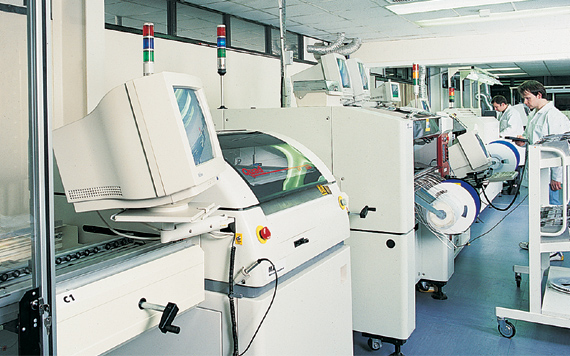
Most components on a Brainboxes card are placed by a surface mount machine (SMT). The surface mount machine allows for highly accurate and fast production of Brainboxes cards. Orders can be met quickly, reliably and with outstanding quality.
T
- Transient Spike Protection
-
All Brainboxes RS422/485 cards have transient spike protection. This protects against noise on the signal line which can be created by: electrical surges on the other device, nearby magnetic field interactions and background noise. This assures safe and reliable operation in almost any environment.
U
- UART
-
A UART (Universal Asynchronous Receiver Transmitter) was one of the first really successful integrated circuits. It makes PC serial communications possible and all of Brain Boxes Serial Devices (and almost all Bluetooth devices) contain a UART. In order to transmit data along a single wire it must be converted from its native parallel format (inside the PC) into a stream of 1s and 0s, and vice versa on the receive side. This is exactly what the UART does.
- Universal PCI
-
Universal products allow compatibility with both 3.3 Volt and 5 Volt PCI systems. This ensures that our universal card range is backward compatible with older systems and works with all new PCI systems. All Brainboxes Universal PCI cards are fully PCI version 3.0 compliant, in accordance with the PCI-SIG.
